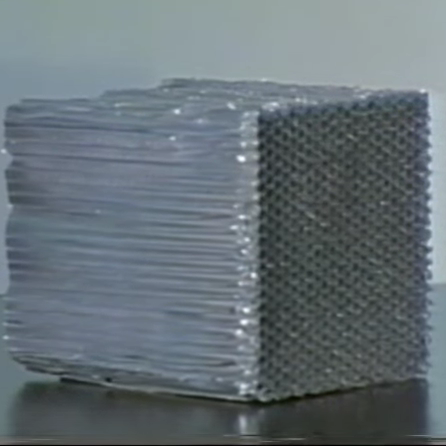Retrotechtacular: Crash Testing Truck Attenuators, for Science [Hackaday]

There are those among us who might bristle at something from the early 1980s qualifying for “Retrotechtacular” coverage, but it’s been more than 40 years since the California Department of Transportation’s truck-mounted attenuators crash testing efforts, so we guess it is what it is.
If you’re worried that you have no idea what a “truck-mounted attenuator” might be, relax — you’ve probably seen these devices attached to the backs of trucks in highway work zones. They generally look like large boxes attached to frames at the rear of the truck which are intended to soften the blow should a car somehow not see the giant orange truck covered with flashing lights and drive into the rear of it at highway speeds. Truck-mounted attenuators are common today, but back in 1982 when this film was produced, the idea was still novel enough to justify crash-testing potential designs.

And, boy, did Caltrans crash test! By our count, 18 cars of various makes and models were harmed in the making of this film, along with one very abused dump truck. The tests start with a couple of control crashes into the truck sans attenuator, just to get the lay of the land. The results are predictably horrific, especially for cars from the 1970s. Along for the ride was the delightfully named “Willie Makeit,” a crash test dummy who may or may not be distantly related to the somewhat more famous “Buster.”
It appears that rather than buying commercial units, Caltrans was testing its own designs for attenuators, all of which were based on honeycomb aluminum called Hexcell. They state that the aluminum in this material is only “7/10,000-ths of an inch” thick — just for scale, that’s about the thickness of standard aluminum foil from the kitchen, and not even the heavy-duty stuff.
Even so, the attenuators performed admirably. They tried a couple of designs, with the best being an arrangement of increasingly larger blocks of Hexcell, to sort of ease the incoming car into the main attenuation block. They spared no expense, either, testing every design against both large cars and smaller models. They must have gotten a good deal on 1972 Matadors for the large car category; incidentally, did anyone ever tell the geniuses at AMC’s marketing department that “Killer” isn’t a great name for a car?
Although Caltrans obviously put a lot of effort and taxpayer money into these crash tests, the whole thing has a very DIY feel to it. No fancy test crash lab was used, just a big open stretch of asphalt and a wire-guided mechanism to launch the cars. Their method for measuring the velocity of impact for unrestrained objects on the interior of the car was quite homebrew too; a clear plastic container that turns on a light when a sliding weight makes it to the front of the tube. All the successful tests kept the impact velocity below 27 mph (43 km/h), which would be about the same speed you’d be going after diving off a three-story building. Ouch!
Hats off to the folks at Caltrans for doing these tests and pushing back a little on the more brutal aspects of the laws of physics. Speaking from experience, motor vehicle accidents are generally much more survivable than they were back in the 1980s, and we’ve got good engineering like this to thank for a lot of the progress.
Thanks to [JohnU] for the tip.

![retrotechtacular:-crash-testing-truck-attenuators,-for-science-[hackaday]](https://i0.wp.com/upmytech.com/wp-content/uploads/2023/10/149570-retrotechtacular-crash-testing-truck-attenuators-for-science-hackaday.png?resize=622%2C350&ssl=1)